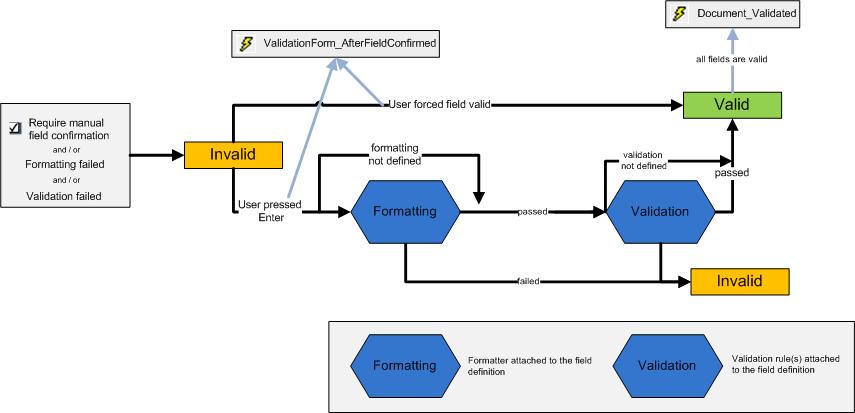Field validation
The field status defined formatting and the applied validation rule that is attached to the field. During server processing state of the field validation is executed and validation works on these output states. The state changes are following the scheme in the flowchart below. The arrows in the figure show how the field state may change during validation checks. The field formatter is applied if defined but it cannot apply a state change, the outcome is a outcome is the precondition for changing to the "Valid "state. Failing formatting results in a invalid field. Applying the validation rule if defined makes the field either "Valid "or "Invalid."
